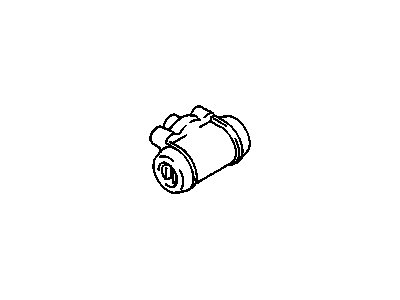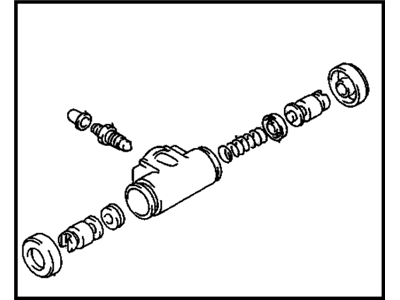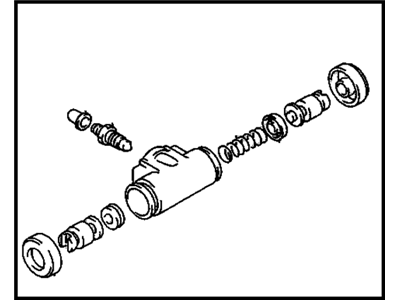
My Garage
My Account
Cart
Genuine Chevrolet Metro Wheel Cylinder
Brake Wheel Cylinder- Select Vehicle by Model
- Select Vehicle by VIN
Select Vehicle by Model
orMake
Model
Year
Select Vehicle by VIN
For the most accurate results, select vehicle by your VIN (Vehicle Identification Number).
5 Wheel Cylinders found
Chevrolet Metro Wheel Cylinder
The Wheel Cylinder used in Chevrolet Metro vehicles is a very important component that presses the brake shoes against the brake drum in order to brake. This hydraulic mechanism includes pistons, cup seals, and an expander spring and is enclosed in a cast iron or an aluminum housing. On applying the brake pressure, pistons come out and the shoes press against the drum. The wheel cylinder can suffer from a form of corrosion water in the brake fluids; this which leads to leakage and low braking efficiency. Thus, a proper functioning of the brakes in vehicles require periodical inspection and maintenance. If there is leakage, the wheel cylinder has to be either replaced or refurbished by using a new rebuild kit with the components of cup seals and boots. Replacing a wheel cylinder with the one having a more polished surface and greater corrosion resistance can increase its durability as well as the vehicle's safety on the roadway.
Each OEM Chevrolet Metro Wheel Cylinder we offer is competitively priced and comes with the assurance of the manufacturer's warranty for the part. Furthermore, we guarantee the speedy delivery of your orders right to your doorstep. Our hassle-free return policy is also in place for your peace of mind.
Chevrolet Metro Wheel Cylinder Parts Questions & Experts Answers
- Q: How to overhaul a wheel cylinder on Chevrolet Metro?A:If an overhaul is necessary due to fluid leakage or sticky operation, it is important to consider all options before starting the job. New wheel cylinders are readily available and can make the task much easier. However, if it is decided to rebuild the wheel cylinder, ensure that a rebuild kit is accessible before proceeding. It is crucial to never overhaul only one wheel cylinder; both should always be rebuilt simultaneously. To begin, raise the rear of the vehicle and support it securely on jackstands, while also blocking the front wheels to prevent rolling. Remove the Brake Shoe assembly and clean any dirt or foreign material from around the wheel cylinder. Using a flare nut wrench, unscrew the brake line fitting without pulling the brake line away from the wheel cylinder. Remove the wheel cylinder mounting bolts and detach the cylinder from the brake backing plate, placing it on a clean workbench. Immediately plug the brake line to prevent fluid loss and contamination. If the brake shoe linings are contaminated with brake fluid, install new brake shoes. To overhaul the wheel cylinder, remove the bleeder screw, cups, pistons, boots, and spring assembly from the cylinder body. Clean the cylinder using brake fluid, denatured alcohol, or brake system cleaner, avoiding petroleum-based solvents. Use compressed air to remove excess fluid and blow out the passages. Inspect the cylinder bore for corrosion and score marks, using crocus cloth to remove light corrosion and stains. If defects cannot be easily removed or if the bore is scored, the cylinder must be replaced with a new one. Lubricate the new cups with brake fluid and assemble the wheel cylinder components, ensuring the cup lips face inwards. When installing, place the wheel cylinder in position and secure it with bolts. Connect the brake line and tighten the fitting, then reinstall the brake shoe assembly. Bleed the brakes and check brake operation before driving the vehicle in traffic.










